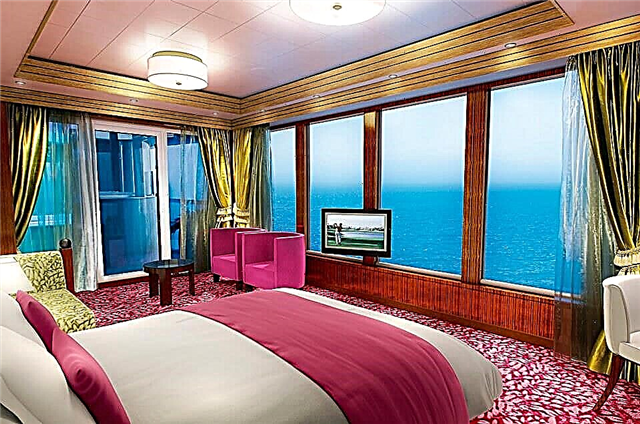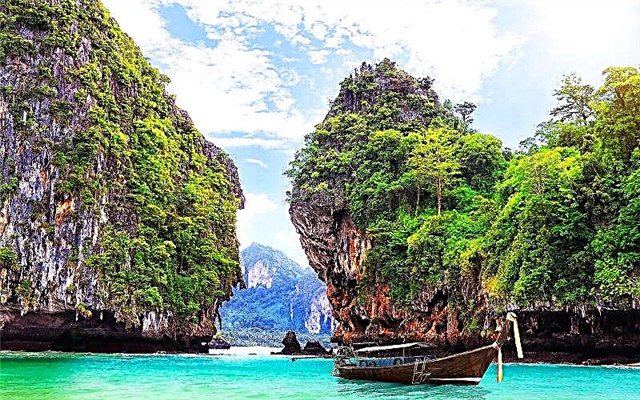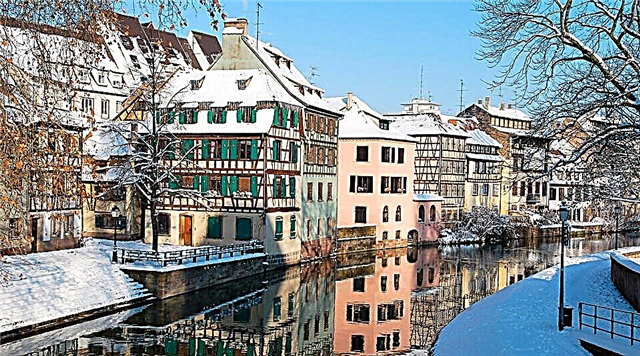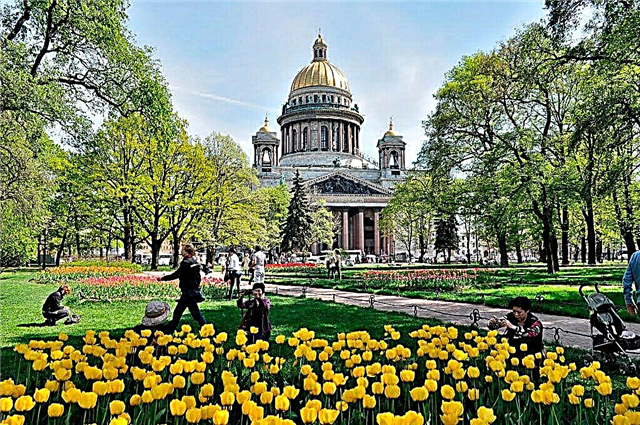In the central part of the city, there is a place born with the history of the city, creating its unusual atmosphere. This is the famous Alexander Garden in St. Petersburg. The same "Sashkin Garden", where even now the leaves of an oak tree planted by Alexander I and growing opposite St. Isaac's Cathedral are whispering about something mysterious.
History

The opening of the monument of park art, protected by the state, took place in 1874. Famous architects, botanists, gardeners (Regel, Ilyin, Katzer) took part in the creation of a harmonious botanical diversity, landscape planning (for the entire period of the garden's existence). For the opening of the garden, about 5 thousand trees, 13 thousand shrubs (52 plant species) were planted. Over the course of its long life, the garden changed its name several times (Workers, named after Gorky). Its area is 9 hectares. The main sights of the city rise around: the Winter Palace on Palace Square, the buildings of the Admiralty, St. Isaac's Cathedral, and numerous monuments.
The birth of the garden and its history are closely connected with their appearance. The layout of the city in the form of three rays passing through the entire city and starting at the Admiralty (these are Nevsky, Voznesensky avenues, Gorokhovaya street according to the idea of Peter I) assumed the use of a huge meadow dividing three directions. The life of the future park ensemble began from the first birch alley, planted on it and going from the gates of the Admiralty to Nevsky Prospekt.
Admiralty meadow
In the 18th century, on the site of the defensive fortifications of the Admiralty (glacis), which had become unnecessary, a site called Lug was formed. There were mass festivities, fairs, children's merry-go-rounds rang, booths were having fun. Later, three squares were formed on its territory: Senatskaya, Admiralteyskaya, Isaakievskaya. Russian holidays (in Cheese, Maslyanaya, Easter weeks) passed here on a special scale, in the spirit of Russian traditions.
In winter, skates rang on the water rink, and the roller coasters sparkled. Many old paintings, engravings have preserved the look of merry holidays. Gradually the surroundings of the Admiralty changed. In the XIX century, the canal became unnecessary (it was filled with water and served as an element of protection). It was filled up, and the famous boulevard appeared on the walls of the main facade.
Admiralteisky Boulevard
Under the guidance of experienced architects and gardeners (Rusak, Gulda, Gotman), an alley-boulevard was created, which has become a favorite place for walks of city residents. The entrance to the boulevard had turntables, turnstiles, with sentries on duty. The territory of the new boulevard was fenced with wooden railings. Oaks, lindens, viburnum, lilacs, mountain ash, many flowers were planted in the alleys.
Planting signs were placed near each tree. The plants were watered daily. Benches were set up along the boulevard, 50 lanterns were hung. Small coffee and tea rooms were opened (the first owners of the houses were the French Marseille and Villau). The eastern zone of the boulevard was extended in 1824 to the slopes to the Neva River. They were fenced with stone walls, decorated with sculptures and statues.
Under the leadership of the sculptor Charlemagne, in 1833, two statues were erected on the boulevard (copies of the antique sculptor Glickon "Hercules Farnesian", "Flora Farnesian"), which are kept among the exhibits of the Tauride Palace. The boulevard, sheltered from the wind, quickly became a popular, fashionable place for cultural entertainment of the townspeople. Elegant ladies, important gentlemen, representatives of the local aristocracy discussed the latest news here. Pushkin in his work "Eugene Onegin" beautifully described a walk along the boulevard as an attribute of the high life of that time.
Transformation

The city of Petra gradually became the face of the empire, the center of international relations. The appearance of the Admiralty building and its surroundings demanded a special attitude in the design ideas, the creation of an unusual zone. This role was successfully fulfilled by the Aleksandrovsky Garden, the prototype of which was the beloved boulevard. The harmonious ensemble of the historic city center has difficult moments in its life. The garden was created on the territory of an open area designed to protect the fortress. It served as a place for the noisy Sea Market (around 1717), a warehouse for storing ship property: forests, anchors.
He survived the terrible destruction during the Second World War. Even freezing from the cold, the inhabitants of the city for the entire difficult period did not use a single tree in the garden for heating. After the war, the garden was completely restored, roses were planted, swimming pools were built, a granite fence was made, and the garden was decorated with sculptures. The following milestones in his life are considered the main stages of the birth of the Alexander Garden:
- Admiralty meadow of the 18th century.
- Admiralteisky Boulevard, born in the 19th century.
- Workers' Garden, so named in 1920.
- Garden named after Gorky since 1936.
- Alexander Garden (the name was returned in 1997).
Soviet period

Since 1989, the park has been renamed Admiralteyskiy, and in 1997 it was returned to its original name Aleksandrovskiy Sad. The last restoration of the famous monument of park culture in Russia was carried out in 2001. Modern paths have been laid, a granite fence and old urns have been restored. At the same time, all the elements of a single architectural ensemble of the three squares that surround them have been preserved (colonnades of the facades of houses on Admiralteisky Prospekt, the General Staff building). In the Soviet period, several sculptural ensembles and monuments dedicated to famous people of Russia were created on the squares of the garden.
Now the Admiralty Garden is considered the face of the Northern capital of Russia. In creating its unique appearance, a lot of work belongs to the specialists of the Botanical Garden of the city, the Petrovskaya and Forest Academies, the Agricultural Institute, the Volkovsky tree nursery. Plants were planted in the garden, brought from different climatic zones: North America, the Far East, Asian countries, regions of Siberia, the Caucasus. Only the Botanical Garden of St. Petersburg can boast of a large species diversity of its plantings.
Garden today

The old garden is well-groomed, loved and adorns the historic center of the city with dignity. The beautiful alleys are serviced by modern technology. On the landscape elements, decorated with harmoniously combined trees, flowers, sculptures, interesting benches for resting, the gaze of those walking lingers. The garden is surrounded by famous sights of the Northern capital, which are sure to be visited by tourists. They will surely pass along the alleys where the passions of the Admiralty Boulevard once raged.
The garden is deservedly included in the UNESCO World Heritage List. It constantly hosts ceremonial events of the city: festivals, exhibitions, concerts, master classes. In winter, the fabulous Santa Claus reigns in it, an old slide for skiing is being restored. In summer, the garden lights up with the vibrant colors of flower exhibitions. Filled with music from orchestras (for example, during International Jazz Day, scheduled for 2018).
Sights
From the moment of its inception, the Alexander Garden had the status of a public, urban recreation area. On its territory, walkways were created, places for recreation in the form of beautiful verandas, benches (over 150 pcs.), Gazebos. Flower beds of various shapes, strewn with extraordinary flowers, the famous fountain appeared, which opened in 18798 (initially it was planned to create three fountains). The famous greenhouse, created by Benoit, numerous pavilions, greenhouses. By the decision of the State Duma, a Gallery of busts of prominent figures of the country (Zhukovsky, Przhevalsky, Lermontov, Pushkin, Gogol) was created in the garden.
Initially, it included 14 names of prominent figures. The monument to Zhukovsky, erected first (1880), expresses gratitude to the famous writer of Russia for the upbringing of Alexander II. Simple and complex sculptural groups are scattered throughout the garden. At the entrance from the side of Palace Square, since 1833, guests have been greeted by the mistress of the plant kingdom, "Flora Farnese".
On the side of Admiralteisky Prospekt, among beautiful plants and a well-groomed lawn, there is an almost imperceptible memorial plate, erected in 2007 in honor of the opening of the first tram line in the city (1907). Together with the sights of the city surrounding the amazing Alexander Garden ring, she brings an element of gratitude to people who remember the history of their Motherland.
East End

The main architectural treasure of the eastern part of the garden was the Admiralty Boulevard. The eastern side of the famous fortress (now the Admiralty building) became the birthplace of Palace Square and Alexander Garden. At the beginning of the 19th century, the garden covered all sides of the Admiralty building. Later, a new city highway between the Winter Palace and the Admiralty buildings (Palace Proezd) passed through the eastern part of the garden.
In the process of reconstruction, dilapidated buildings were demolished, new paths and alleys were cut through the thickets, rose gardens and flower beds were laid. A tram line appeared, bus traffic of city routes. The famous Palace Square appeared on the site of the defensive structures of the fortress (eastern parts of the glacis, expands).
Central part

The main attraction of the central part of the garden is the famous "musical, dancing" fountain, created in 1880 according to the project of Geshwend. It was planned to install three fountains in the direction of three beams (main streets). Due to complex, expensive hydraulic engineering work, only one was created with the jet height changing in time to the music playing in the garden.
She reached a height of 28 m, which was rare in those days. Around the central stream there are special tubes, from which 40 more water streams emerge. They whirl in an endlessly dancing whirlwind above the granite bowl of the fountain pool. The diameter of the pool (large bowl) is 24.5 m. Its bottom and sides are made of a rare type of granite brought from the foreign island of Janisaari. A copy of the fountain stands on Manezhnaya Square.
There are comfortable benches around, which are almost always occupied by vacationers. From them you can admire the Admiralty building, enjoy the splashes of a beautiful fountain, look at the monuments to Gogol, Lermontov, composer Glinka. Throwing a coin into the fountain as a keepsake, you can walk along the central path of the garden, see her sculptures, well-groomed plants, trees. You can even climb onto the back of a camel standing at the Przewalski monument.
West Side

Having walked through the entire garden, ending the journey in its western part, one can say until the "New Meeting" of the famous sculpture of antiquity Hercules (on the alley of the same name). Once again take a look at the magnificent building of St. Isaac's Cathedral (one of the tallest domed creations in the world or the "Museum of Colored Stone"), stand in the shade of an oak tree planted by Alexander II. An obligatory route is a meeting with the majestic monument to Peter I the Bronze Horseman, made under the guidance of the sculpture Falcone. Listen carefully to the history of the appearance of the Senate Square in the western zone of the Alexander Garden.
Working hours
The garden is open to visitors around the clock, every day.
Where is it located and how to get there

The popular attraction of Russia is located at the address: St. Petersburg, Admiralteisky Prospekt. From anywhere in the city you can get to the Palace Square. If you choose to take the metro, then you need to get off at the Admiralteyskaya station. Walk along the beautiful avenues (Nevsky, Admiralteysky) and find yourself at the entrance to the garden.











